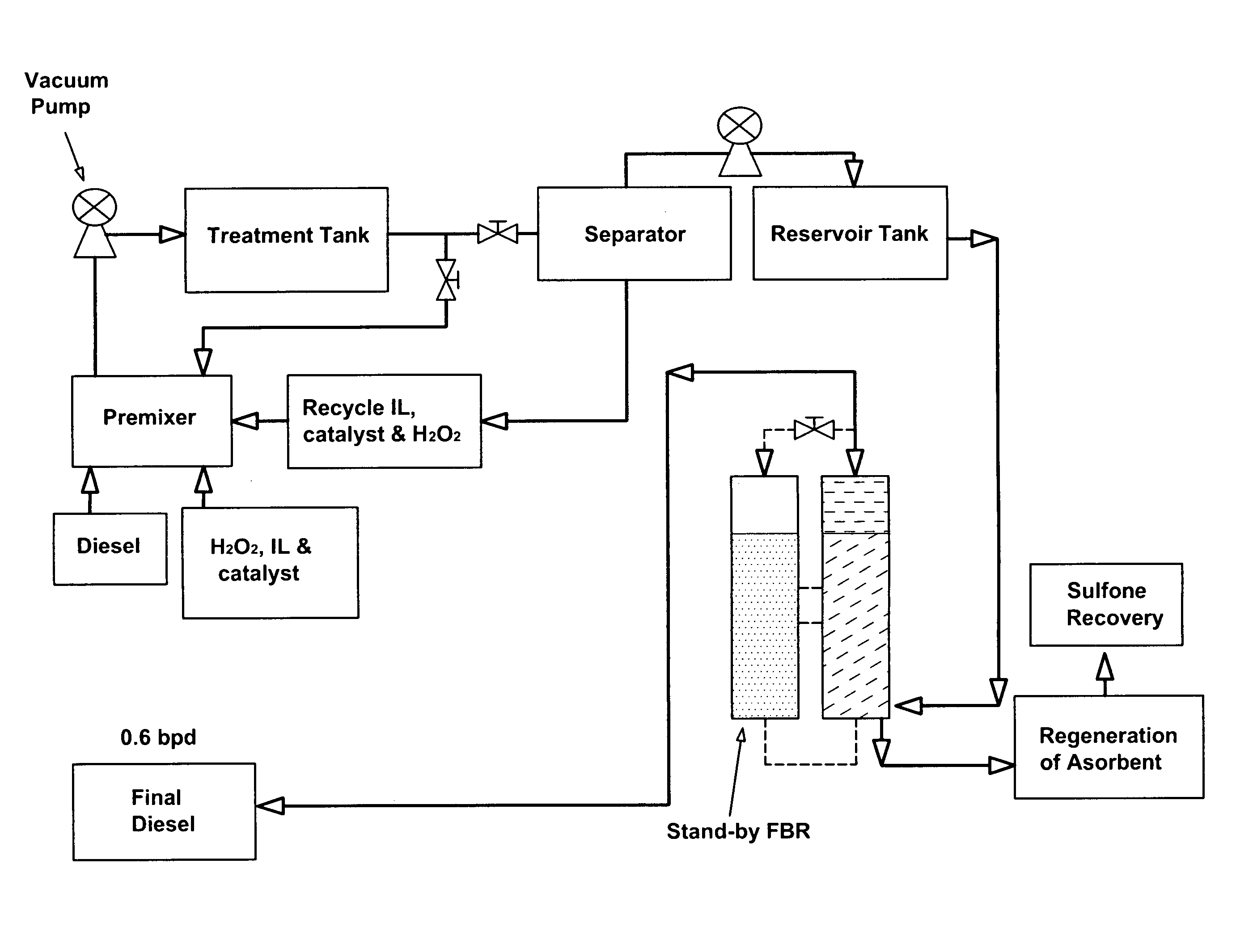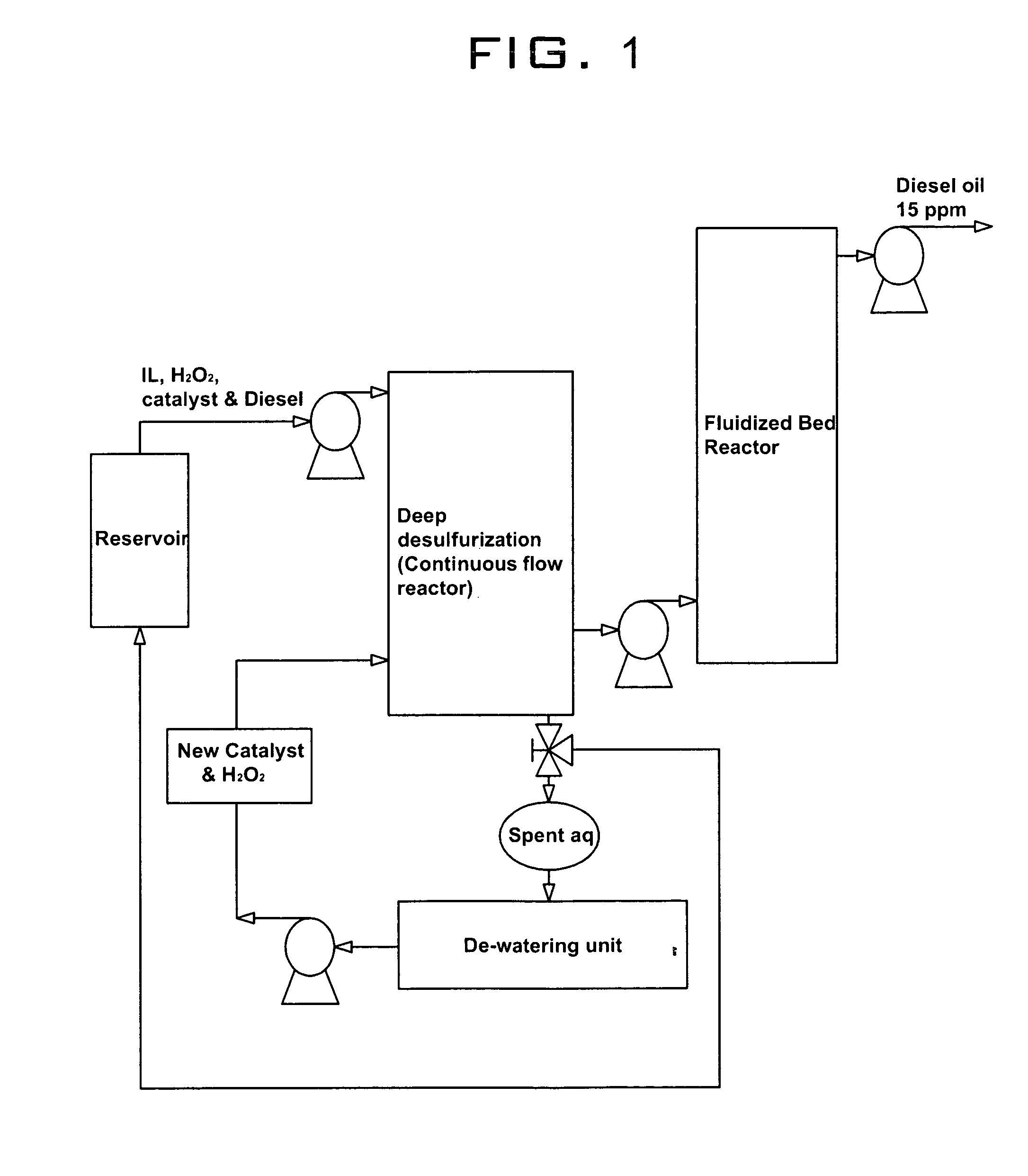Diesel desulfurization method
a desulfurization method and diesel technology, applied in the direction of hydrocarbon oil treatment, hydrocarbon oil treatment, acid-containing liquid refining, etc., can solve the problems of diesel cars burning diesel fuel that typically produces more emissions, diesel engines typically have great fuel mileage, and high sulfur content in diesel still create pollution
- Summary
- Abstract
- Description
- Claims
- Application Information
AI Technical Summary
Benefits of technology
Problems solved by technology
Method used
Image
Examples
Embodiment Construction
[0010]The present invention modified desulfurization method includes two parts. The first part involves desulfurization of OSCs with the six complementary techniques: Acid catalyst, phase transfer agent (PTA), oxidant, sonication, mechanical stir and room temperature ionic liquids (RTILs). In the second part, desulfurization of thiophene occurs via solid catalyst with microporous crystalline titanium silicates.
[0011]The key part of this system is to use acid catalyst, phase transfer agent (PTA), oxidant, sonication, mechanical stir and room temperature ionic liquids (RTILs) simultaneously.
[0012]There are hundreds of different catalysts and all of them have different properties. Acetic acid is a good catalyst. Tri-fluoro acetic acid is also a good catalyst. The best mode is to have 20% Tri-fluoro acetic acid with 80% Acetic acid, hereafter called 20% Tri-fluoro acetic acid. Tri-fluoro acetic acid concentration can vary from 15% to 40%.
[0013]The phase transfer agent can be Tetraoctyla...
PUM
| Property | Measurement | Unit |
|---|---|---|
| temperature | aaaaa | aaaaa |
| stir time | aaaaa | aaaaa |
| temperature | aaaaa | aaaaa |
Abstract
Description
Claims
Application Information
 Login to View More
Login to View More - R&D
- Intellectual Property
- Life Sciences
- Materials
- Tech Scout
- Unparalleled Data Quality
- Higher Quality Content
- 60% Fewer Hallucinations
Browse by: Latest US Patents, China's latest patents, Technical Efficacy Thesaurus, Application Domain, Technology Topic, Popular Technical Reports.
© 2025 PatSnap. All rights reserved.Legal|Privacy policy|Modern Slavery Act Transparency Statement|Sitemap|About US| Contact US: help@patsnap.com



